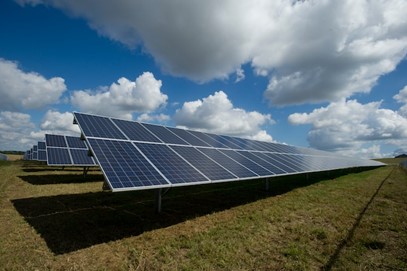In an era where the interplay between health, wellness, and the environment has never been more critical, individuals like Jonathan C. Portney, Lake County's Health Services Director, is paving the way for a holistic approach to our well-being. In the following article, Jonathan Portney explores insights, initiatives, and the profound impact they hold for both personal well-being and the planet's health.
In 1938, steam engineer and amateur scientist Guy Callendar made an alarming discovery the planet was warming. The large majority of scientists ignored his findings, that carbon dioxide emissions were to blame.
Jonathan C. Portney explains that since then, Callendar's findings have proven to be remarkably spot-on. In 1958, the first evidence was uncovered that carbon dioxide levels were rising, and fossil fuels were responsible. Ten years later, scientists used computers for the first time to show models of the planet's changing climate and offered sobering estimates for the future.
Much of what was predicted then has become true and is still ongoing. Ice sheets have collapsed, and sea levels continue to rise. Coral reefs are still dying. A malignant hole in the ozone layer was found above Antarctica in 1985 and still threatens life on Earth. The Arctic is still warming at rates two times as fast as the rest of the world.
Jonathan Portney of Lake County says that between 1994, when the first climate change legislation was introduced by the United Nations, to 2015's carbon reduction plan in the Paris Agreement and 2019's UN report that animal and plant species on earth are dying off at unprecedented rates, climate change has been on the minds of everyone who calls planet Earth home.
And everyone is now realizing that climate change is also impacting their livelihoods every single day.
Jonathan Portney of Lake County says that climate change's impact on humankind's well-being is deep and wide. Climate change has been shown to worsen existing diseases and hasten the spread of pathogens into regions previously untouched.
It has led to poorer air quality and extreme heat, all of which exacerbate illnesses in cities and rural areas, especially respiratory and heart conditions.
Additionally, global warming has led to consistent dangerous risks to public health around the world. Extreme weather events sky-high temperatures, more intense hurricanes and flooding, widespread wildfires have become more frequent, threatening lives and making it difficult to provide vital health services.
Jonathan Portney, Health Services says that the danger is everywhere: waterborne disease rates are expected to increase, water is easily contaminated, and the safety of food staples like rice and wheat is constantly threatened.
A recent report from a team of global health experts is clear: progress in fighting climate change progress is too slow and as a result, there are large and immediate threats to some of the world's most vulnerable populations.
The conclusion is that climate change is choking the word, day after day. Now, more than ever, global warming is the greatest threat to life on Earth, according to the Pan-American Health Organization.
 What Can Be Done
What Can Be DoneJonathan Portney Health Services says that the enormity of climate change is sometimes difficult to fathom, especially since the monumental changes caused by human activity have warmed the planet by just a little over 1 degree Celsius. But that seemingly small increase has had major repercussions, and it's now in our hands to heal our planet.
One of the biggest priorities is cutting down on greenhouse gas emissions, according to the U.S. Environmental Protection Agency. In addition to governments and businesses pledging to reduce carbon emissions, there are additional ways to help. Individuals can commit to using renewable energy sources, such as wind and solar. Even a few energy-saving light bulbs can make a difference every day.
Here are a few other ways to stem the tide of climate change and protect human health:
